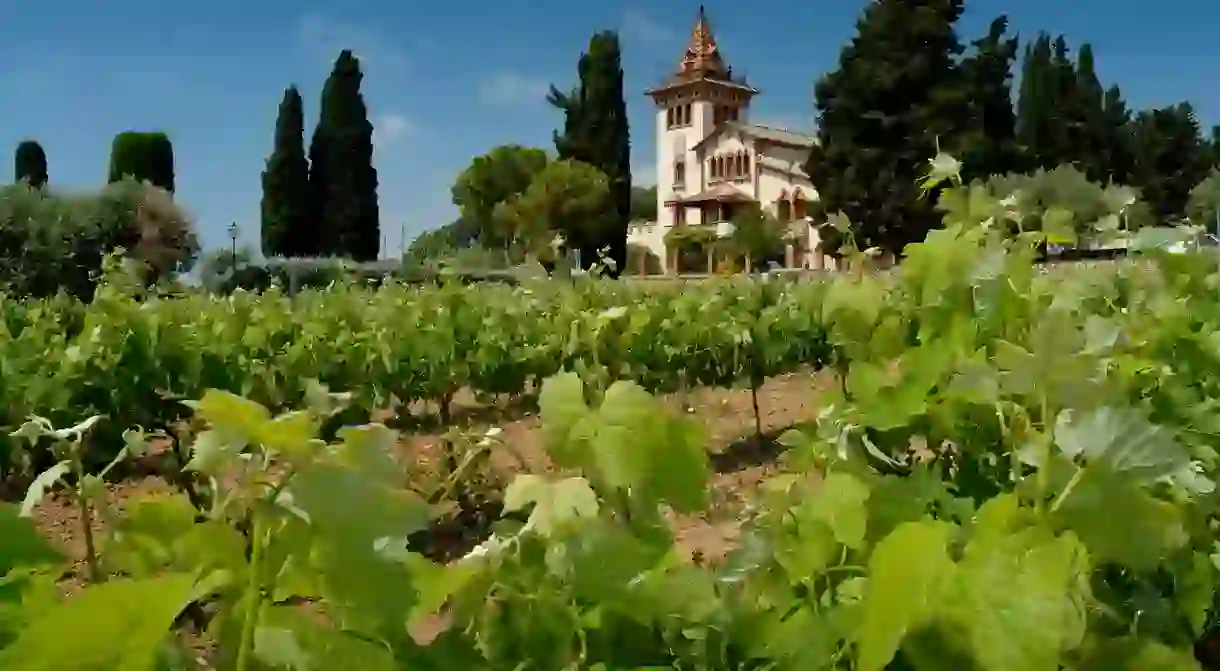The 10 Wine Regions You Need To Know In Catalonia, Spain

Located in the north-east of the Iberian peninsula, Catalonia is a fascinating Spanish province, home to some of the most sought-after Spanish wines in the country. We’ve compiled an easy guide to the 10 best wine-producing areas in Catalonia.
Penedès
This is the largest and most significant wine-producing region in Catalonia. It is also one of the oldest wine-producing regions in Europe with traces of early viticulture dating back to the sixth century BC. The diversity of its terrain makes it particularly well-suited for a variety of grapes. Today it is known as the home of some of the most avant-garde wine producers in Spain. It’s worth noting that the region is also the recognized heartland of the Spanish sparkling wine known as cava. Despite having its own controlled appellation (a D.O. or Denominació d’Origen) it is not confined to just this one specific area of Spain.
Priorat
Today perhaps the most well-known Catalan wine region on the international stage is Priorat. It is one of only two regions in Spain to have the special appellation D.O.C or Denominació d’Origen Qualificada, recognizing the outstanding quality and consistency of its wines. The special volcanic properties of the soil in the area lend the wine its flavor and mean that the yield on vines is particularly low compared to other regions. Add to this the fact that the vines mostly grow on heavily slanted hillsides which makes mechanical picking of the grapes impossible in many cases. It’s easy to see why this is some of the most sought-after wine in the country.

Empordà
Located in the north-east of Catalonia, near the popular seaside area known as the Costa Brava, the Empordà wine region has a long history of making rosé wine. Today red wine accounts for 60 percent of its annual production. The reds tend to be full-bodied and are sometimes aged in oak barrels for added depth of flavor. There are more than 20 grape varieties allowed under the official appellation DO Empordà including the non-native Gewürztraminer white grape variety.
Tarragona
This wine region is named after the southern Catalan town of Tarragona around which it is situated. The area has long had a history of producing rich, heavy reds, similar to fortified wines such as port, which were already being enjoyed in the time of the Ancient Romans. Today this strong wine is still made in some areas and is known as Tarragona Clásico. However, despite the historical tradition, nowadays more than 70 percent of the grapes grown in the area are white and Tarragona is an important producer of cava wine.

Conca de Barberà
This historic wine-producing area in the province of Tarragona is famous for its white wines, which account for more than 60 percent of its total production. The most renowned type is the Parellada white wine made entirely from the eponymous grape variety. The region’s rosé wines are also popular and made from an aboriginal variety called Trepat. Some reds can also be found in the area, including a tempranillo, known locally as Ull de Lebre meaning ‘the Eye of the Hare’.
Costers del Segre
Perhaps the most arid of the Catalan wine regions, with less than 45cm of rain per year on average is Costers del Segre. This is the first wine-producing region in Catalonia where the non-native varieties Chardonnay, Cabernet Sauvignon and Merlot were introduced alongside native ones. The reds tend to have depth of flavor and fruitiness while the whites are usually complex and full-bodied.

Alella
This small wine region is sadly in decline, despite traces of wine-producing in the area dating back to the time of Ancient Egyptians. Today the viticultural land around Alella occupies only a third of what it did just 60 years ago. However, it continues to produce some popular wines such as the Maresme wines, which tend to have low acidity. It also produces Valles wines, with a stronger flavor and a much higher acidity.
Pla de Bages
This tiny wine region covers barely 600 hectares in total and has only had official recognition since the mid-1990s but is believed to owe its name to the Roman God of wine Bacchus. Located in the province of Barcelona, this place – like many other wine regions in the area – suffered greatly from the phylloxera outbreak which spread from France in the late 19th century. So terrible was the devastation here that the industry did not really recover until the late 20th century.

Montsant
This newcomer used to form part of the DO Tarragona until the early 2000s when the request for a special denomination for wines produced around the Montsant mountains was approved. Since then it has rapidly grown in size and importance in terms of national production. However, more than 60 percent of wines produced there are destined for foreign markets. It produces almost exclusively red wines which tend to be full-bodied and powerful. It’s also worth noting that it is the only wine region in Catalonia, and one of few in Spain, which produces Kosher wines.
Terra Alta
The Terra Alta is a little-known wine-producing region in the province of Tarragona which until recently mostly focused on wine for local consumption. Its name literally means ‘High Lands’ and refers to the mountainous terrain on which it sits. Today it has a growing reputation for its ‘Terra Alta Garnatxa Blanca’ white wine, full of flavor and slightly golden in color.













